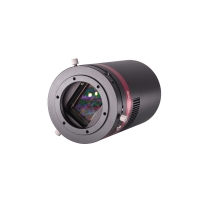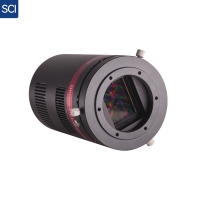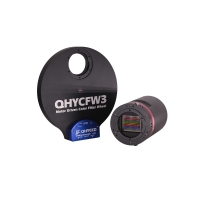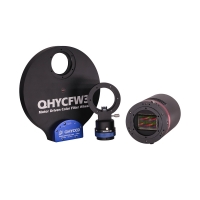QHY600M/C Photographic Camera
Starting Price: $4,599.00
Price as Configured: $4,599.00
Price as Configured: $4,599.00
Brand: QHYCCD / SKU: QHY-600M/C-PH
The QHY600 is the premier astrophotography camera. It has a massive Sony IMX 455 back-lit sensor for advanced imaging applications with low read noise and 16-bit output. It also offers a full frame (35 mm) format with 3.76-micron pixels and a 36 mm x 24 mm sensor to bring out the best in your imaging data. QHY offers both monochrome and color versions.

Need help deciding?
Tell us what you're looking for, and we’ll point you in the right direction. Email Us.
Tell us what you're looking for, and we’ll point you in the right direction. Email Us.
- QHY600 PH: Standard version for amateur astrophotographers, monochrome or color;
- QHY600 PH-SBFL (Short back-focal length version), monochrome or color: specially designed for DSLR lens users or those who need a short back focal length. The BFL consumed equals 12.5mm when connecting QHY color filter wheel. QHY600 PH SBFL can easily match a Canon/Nikon lens even with a filter wheel. On the side of the adapter, there is a 4mm hole to connect an air pump through a plastic pipe in case of the dewing.
- QHY600L: a lighter, shorter and less-expensive version, monochrome only. Compared with QHY600 PH, QHY600 PH-Lite has the following features compared with previous models: the body length is (about 112mm), the built-in DDR3 buffer (memory storage) is adjusted to 1GB compared to 2GB of QHY600PH/Pro. Other specifications of QHY600 PH-L are the same as the QHY600 PH.
- QHY600 PRO: Astronomy Camera: Sony IMX455 CMOS, Full Format, BSI, 3.76um Pixels, Native 16bit A/D, 60MP, 2GB DDR3, Multiple Readout Modes
Native 16 bit A/D: The Sony sensor has native 16-bit A/D on-chip. The output is real 16-bits with 65536 levels. Compared to 12-bit and 14-bit A/D, a 16-bit A/D yields higher sample resolution and the system gain will be less than 1e-/ADU with no sample error noise and very low read noise.
BSI: One benefit of the back-illuminated CMOS structure is improved full well capacity. This is particularly helpful for sensors with small pixels. In a typical front-illuminated sensor, photons from the target entering the photosensitive layer of the sensor must first pass through the metal wiring that is embedded just above the photosensitive layer. The wiring structure reflects some of the photons and reduces the efficiency of the sensor. In the back- illuminated sensor, the light is allowed to enter the photosensitive surface from the reverse side. In this case the sensor’s embedded wiring structure is below the photosensitive layer. As a result, more incoming photons strike the photosensitive layer, and more electrons are generated and captured in the pixel well. This ratio of photon to electron production is called quantum efficiency. The higher the quantum efficiency, the more efficient the sensor is at converting photons to electrons, and hence the more sensitive the sensor is to capturing an image of something dim.
Zero Amplify Glow: This is also a zero amplifier-glow camera.
True Raw Data: QHY Cameras offer true raw image output and produce an image comprised of the original signal only, thereby maintaining the maximum flexibility for post-acquisition astronomical image processing programs and other scientific imaging applications.
Anti-Dew Technology: Based on almost 20-year cooled camera design experience, QHY cooled cameras have implemented a full dew control solution. The optic window has a built-in dew heater and the chamber is protected from internal humidity condensation. An electric heating board for the chamber window can prevent the formation of dew and the sensor itself is kept dry with a silicon gel tube socket design for control of humidity within the sensor chamber.
Cooling: In addition to dual stage thermoelectric cooling, QHY implements proprietary hardware technology to control the dark current noise.











